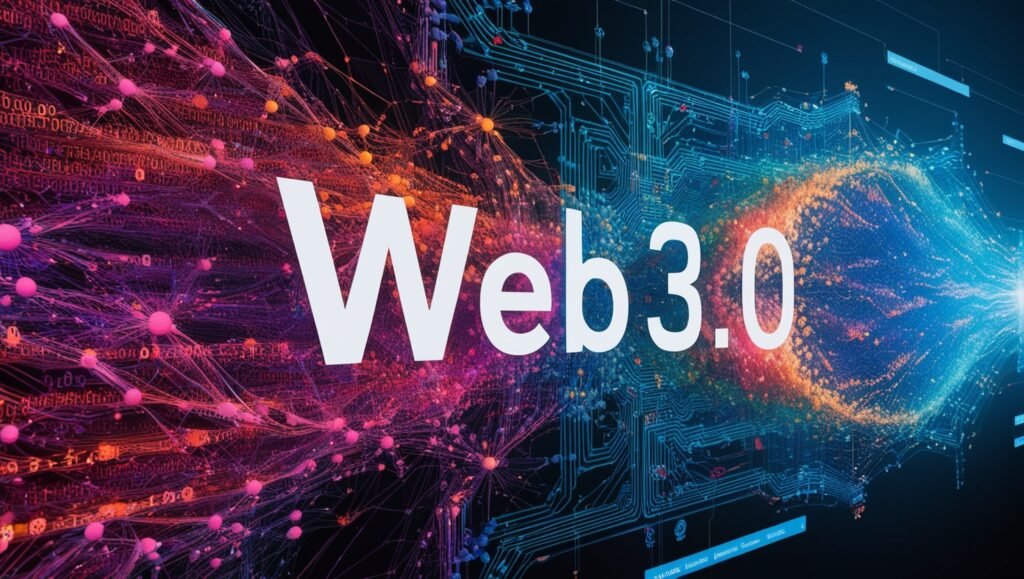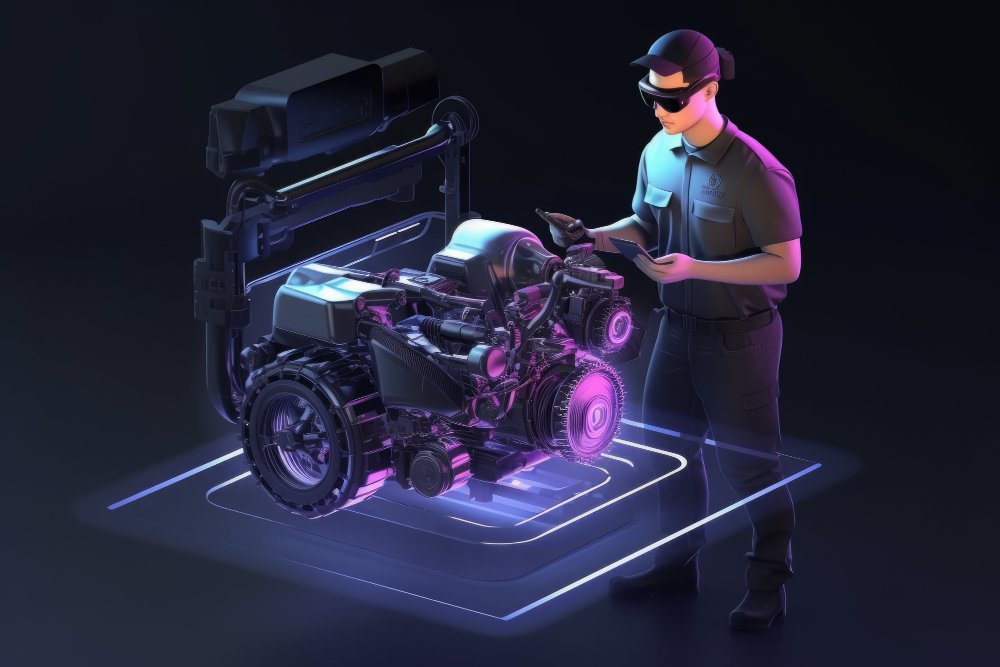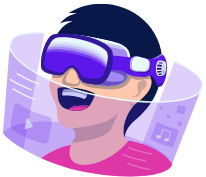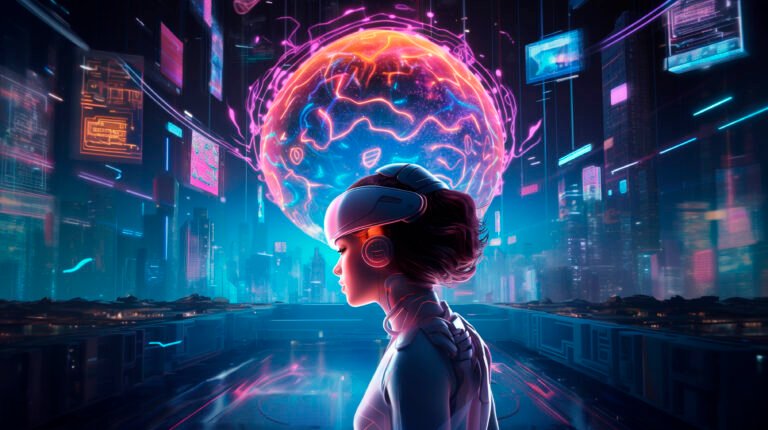
Table of Contents
What is Web 3.0? The Future of the Decentralized Internet Explained
Web 3.0 is decentralized, user-centric, intelligent internet-era Unlike Web2.0 which is place owned by more tech giants like Google and Facebook, Web3 world, by utilizing such technologies as blockchain, artificial intelligence (AI), decentralized applications (dApps). The web that is being built this second time around offers privacy, enhanced security, and data ownership.
The Evolution from Web 1.0 to Web 3.0
To better understand Web3.0, let’s explore its predecessors:
- Web 1.0 (1989-2005): Web 1.0The original iteration of the web was more of a one way flowed communication, basically a place to read and consume some information from static websites between years 1989 &2005. There was almost no interaction and user-generated content.
- Web 2.0 (2005-present): It is when interactivity in the form of social media platforms and user-generated content are introduced. The era of Web 2.0 saw social networking platforms, like Facebook and Twitter, and video-hosting services, such as YouTube, being run by centralized corporations which held all their user data.
- Web 3.0 (Future): Web 3.0 tries to de centralize web targeted away from this corporate controlled platforms In this new internet environment, users get more control of their data and interactions by using blockchain technology along with AI.
Key Features of Web 3.0
Decentralization: As opposed to Web 2.0, where data remains in centralized servers; Web 3 has got blockchain for decentralized information storage and transfer Such a move will enable the users to involve in peer-to-peer (P2P) transactions without third-party interference.
Artificial Intelligence (AI) and Machine Learning: Web3 is incomplete without AI functionalities, so please dont skip this part. Using AI to predict user behavior based on data and provide personalized experiences. This improves search engines, and other services from being more smart and aware of its context.Company like Meta is using own AI to understand user behaviour.
Semantic Web: The semantic web is at the heart of the development of Web3. 0. It allows machines to understand and interpret the meaning of data giving rise to data-driven smarter applications. This will eventually lead to an extremely personalized information retrieval from the users by making the web more intuitive.
Blockchain Technology: Blockchain is the heart of Web3. 0. Support transparent, secure and tamper-proof transactions across decentralized networks. Smart contracts and DeFi will disrupt financial transactions by cutting out banks and other intermediaries.
User Ownership of Data: In Web3 0, user data ownership. In contrast to Web 2.0, in which businesses like Facebook harvest and sell user information, Web3. 0 turns it into data that people own and can profit from.
Interoperability: Web 3.0 aims to make the Internet more interconnected by enabling seamless communication between decentralized apps and platforms, without being locked into one ecosystem.
Exploring how Web 3.0 is used and its practical applications

Things like this can be invaluable as non-fungible tokens( NFTs), which are rare digital items on the blockchain – art pieces, music, and media you could find in the cans of a long-lost shoebox. These tokens cannot be replicated or excerpted from the blockchain. Web 3.0 now provides creators with a more solid means to tokenize their work, because this is one of the best ways that they can prove that what they are claiming is indeed true.
In a Web 2.0 universe, with its central locations for online interaction social media using blockchain technology gives users back to control of their content and data, allowing them to navigate it; themselves as they choose. Good news for people who make content who are gaining power and restringing the ability to put a muzzle on them.
Smart contracts in Web 3.0 are more like self-operating deals that function on the agreement terms and automatically execute the agreed functionalities without anyone’s intervention, which is essentially what makes it’s associated to various sectors as real estate, insurance field, supply chain management have set of benefits with them inbuilt smart contracts.
The benefits that come with Web 3.0.
Enhanced Privacy and Security: Using blockchain and encryption, Web3. 0 offers robust security. It also implies users retain their own data preventing the hacks and data breaches so inherently steady with centralized Web 2.0 frameworks.
Freedom from Censorship: Make censorship a thing of the past. It grants individuals free speech by cutting out the central controllers. The users are allowed to State what they wish with No worry about the very censorship of corporate platforms.
Ownership of Data: In contrast to Web 2.0 in which companies take profit from user data, Web3 does Decentralized Identity System 0 Puts Users In Control of Their Private Data They can either share or potentially make money from their data if they wish to do so.
Improved User Experience: AI & Machine Learning in Web3 Form more personal experiences with offers, search results and tasks for users. 0fin runtime will creates a more personal user experience by deliver better recommendations and searched content.
Challenges of Web 3.0
Scalability Issues: The basic technology of Web 3.0, blockchain is currently facing scalability issues which can be a barrier to mass adoption. It could potentially face challenges in wide-spread adoption due to constraints around transaction speeds and fees, but developers are working on ways to improve these things.
Energy Consumption: Because blockchains have a decentralized framework, by design, this requires considerable computational resources. This leads to increased levels of energy consumption. However, there are also novel approaches being developed to reduce energy consumption (proof of stake (PoS), but most energy goes into mining).
Regulation and Legal Concerns: Regulatory bodies, and government institutions are slowly gearing to adjust with the decentralized nature of web 3.0. The matters of taxation, anti-money laundering (AML) legislation, and consumer protection remain the main areas to be addressed.
User Adoption: This technological depth might be a discouraging factor for user adoption of these technologies, mainly blockchain and digital currency. The evolution of user-centric interfaces and extensive resource materials for educating users.
What exactly is Web 3.0?
Web 3.0 is the next phase of the internet that uses blockchain, AI, and decentralization to give users more control over their data and interactions. It aims to create a more secure, private, and intelligent online experience without relying on central authorities.
Does Google use Web3?
No, Google doesn’t fully use Web3 yet. Its services are still based on Web 2.0, but it’s exploring blockchain and decentralized technologies.
What is the difference between Web 2.0 and Web3.0?
Web 2.0 centers on centralized platforms and social media, while Web 3.0 is decentralized, using blockchain, AI, and dApps to give users control over their data and interactions.
Is Web3.0 available now?
Web 3.0 is still in development but is gradually emerging. Some decentralized technologies, like blockchain and dApps, are already in use, though full adoption is yet to happen.

